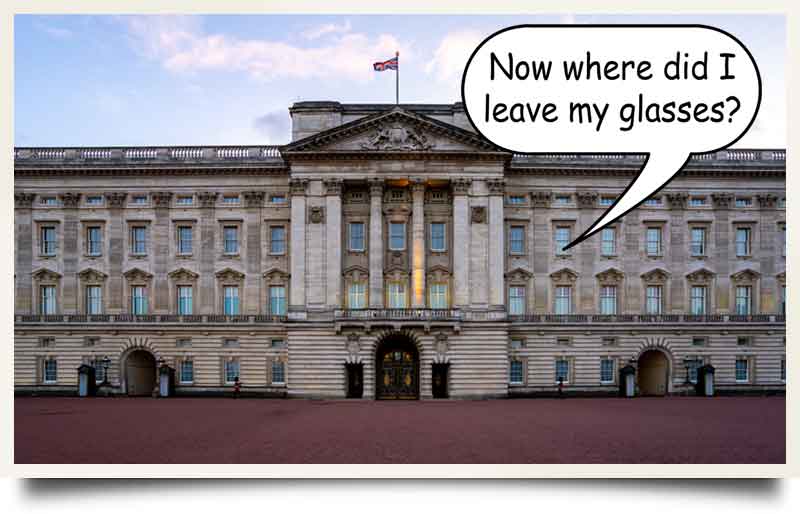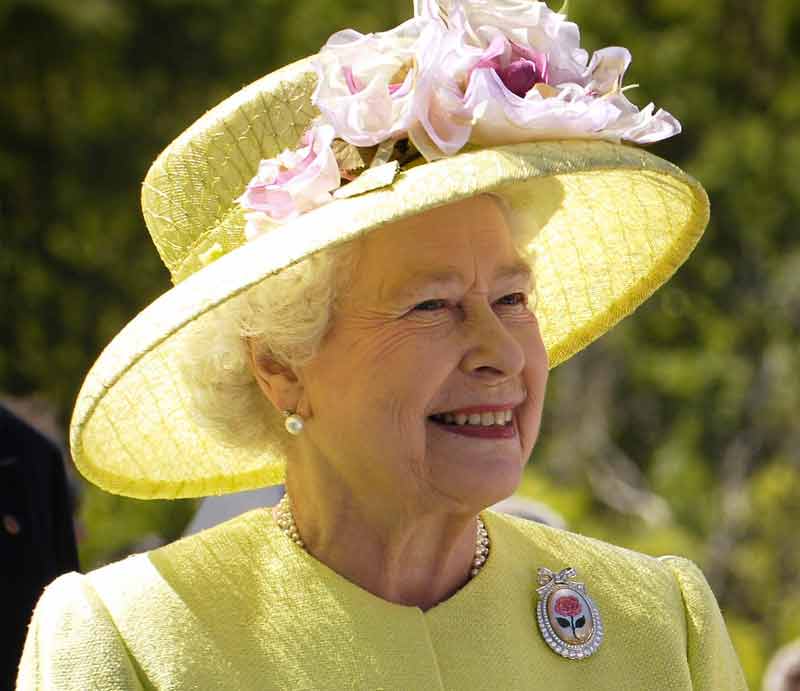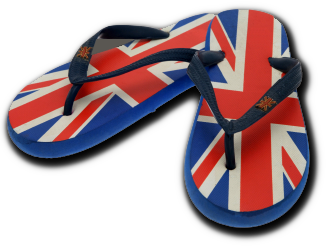Many ceremonies take place at Buckingham Palace. Investitures–the process of knighting men and women by a ceremonial sword–occur in the palace’s ballroom to military bands playing celebratory music. Banquets happen in the ballroom, too, when the Monarch meets with the rest of the Royal Family and honoured guests. 50,000 guests are invited to Buckingham Palace every year. As the longest reigning Monarch Queen Elizabeth II's dedication to the country was unquestioned. We expect the same dedication from King Charles III.
Buckingham Palace London Private Guided Tours

Perhaps the most known building in the United Kingdom, Buckingham Palace has housed the Head of State (King or Queen) for over 180 years. Buckingham Palace is located in the City of Westminster, a region in London. Built in 1703 for the Duke of Buckingham, the Royal Family did not acquire the building–originally called Buckingham House–until King George III bought the residence in 1761. The building was expanded in the 19th century by architects John Nash and Edward Blore.

Buckingham Palace has a lot of rooms. In total, there are 775 rooms including a post office, cinema, swimming pool, surgery room and even a jeweller’s workshop. Let’s hope Prince George doesn’t like hide and seek! The entire grounds of Buckingham Palace spans 39 acres. That’s equivalent to over 29 football fields. That’s why, understandably, the palace needs a lot of guards. In fact, there is one for every acre on duty at all times; for a total of 39 soldiers. Surprisingly, then, there have been security incidents where intruders somehow navigated their way through the veteran guards. Such as a case involves Michael Fagan – a London born man who was a “champion safe-breaker”. If Michael is to be believed, he actually broke into Buckingham Palace twice. In June 1982, Fagan supposedly shimmed his way up a drainpipe and made his way into the palace through an unlocked window. Before being spotted by a housemaid, Fagan reports he ate cheese and crackers for half an hour. He escaped before capture. He returned, however, one month later. Using the same drainpipe, this time Fagan broke into the Queen’s bedroom. When the Queen arrived, he even asked her for a cigarette. Showing true British class, the Queen complied before police arrested Fagan and removed him from the palace.

During the Second World War, Buckingham Palace was a target of German bombing. It may surprise then, that the entire 39-acre grounds was only hit by bombs sixteen times–only nine of which were direct. The closest Buckingham Palace came to destruction was actually by a British pilot. In 1940, during the Battle of Britain, Ray Holmes, an RAF pilot, rammed a German bomber after believing it primed to bomb the palace. If not for precise aviation, his own plane would have crashed into Buckingham Palace. It instead crashed into Victoria Station.
Buckingham Palace is one of the most iconic buildings in the world. When you visit, be sure to watch the changing of the Royal guards.
Heritage
Buckingham Palace and all it stands for is steeped in history and heritage. Heritage is the full range of our inherited traditions, monuments, objects and culture, and the Palace certainly fulfills all these criteria. From a 'traditions' angle we have all the pomp and ceremony associated with the royals including investitures and the Changing of the Guard and from a 'monuments' viewpoint there's the imposing façade of the building that has come to symbolise monarchy and authority throughout the world. Not just the Monarch's home but also a working office it has come to represent the voice of the monarchy, where VIPs and citizens are received and entertained. Objects collected from around the world, often as gifts represent the heritage of cultures throughout the globe but there's a more unsavoury side to the heritage of royals past with the monarchy's links to the Royal Africa Company, beginning with the Stuart kings. This is often a theme of some of the Black History tours that explore such connections across the capital.
Hit the highlights, from Big Ben's chimes to Harrods grandeur. Immerse yourself in royalty at Buckingham Palace. Delve into history at the Houses of Parliament or lose your head at the Tower! Meet the legendary Sherlock Holmes at 221B Baker Street or rock out Beatles style at Abbey Road. Your London, your adventure. Book now and make it yours!
Black Cab Tour
Uncover London's secrets and must-sees. Tailor your adventure, from majestic Westminster Abbey and Buckingham Palace to hidden pubs and Shakespeare's Globe. Witness the Changing of the Guard, stroll through Hyde Park, or take a ride on the London Eye. Experience the best of London, your way.
Chauffeur Driven Car
Swap the train for the trail and unwind on this fascinating greentrail walk, linking London's royal parks, hidden squares, and vibrant markets. Breathe deep in Regent's & Hyde Park, uncover whispers in Lincoln's Inn Fields, then shop Spitalfields' past & present.
Walking Tour
An absolute must: see the famous “Changing of the Guard” ceremony in this lovely walk around Westminster's Royal Parks and Palaces. With views of Buckingham Palace, Trafalgar Square & Downing Street.
Walking Tour with Public Transport
Follow in the footsteps of the Great and the Good in the heart of Westminster, from Royal London to "TheatreLand" and the famous West End... Not to be missed!
Walking Tour with Public Transport
Whizz past London's icons in a luxury car! Buckingham Palace, Tower Bridge, St Paul's Cathedral-pack it all in on our custom drive-thru tour, perfect for short stays. Choose your theme-royals, parks, architecture, or even Harry Potter!
Chauffeur Driven Car
No more Heathrow blues, iconic sights await! Rub shoulders with royalty at Buckingham Palace and delve into politics at Parliament. Hear tales of past and present, from castles & kings to pop stars and historic cathedrals. Craft your own London tale—book your tour today!
Black Cab Tour
See London in style and enjoy a private, 5-star chauffeur experience in an electric hybrid London taxi. A knowledgeable City of Westminster Guide will tailor your tour to your interests, showcasing iconic landmarks like Buckingham Palace and the Tower of London. Capture amazing selfies and receive complimentary souvenir photos. Book your unforgettable London adventure today!
Black Cab Tour
Arriving at Tilbury and heading to London? Turn your transfer into an unforgettable experience! Our private Black Cab or MPV sightseeing transfer tour combines comfortable transportation with a panoramic journey through London's iconic landmarks. Let us whisk you away to the heart of the city while showcasing its magic. Let our guide bring London's history to life.
Transfer Tour
Discover London's hidden beauty on a black cab tour through enchanting gardens. Explore historic Trinity Square Gardens, rooftop havens with panoramic views, and the peaceful ruins of St Dunstan's in the East. A short scenic cab ride finishes at the quirky Garden Museum by Lambeth Palace.
Black Cab Tour with Walking Stops
Unlock London's secrets on a personalized city tour! Witness Big Ben, St Paul's Cathedral, Buckingham Palace, and hidden gems. Dive into history, traditional English pubs, and vibrant markets with your friendly local guide. Craft your London adventure today! Available as a 4, 6 or 8 hour tour.
Black Cab Tour with Walking Stops
Explore London's iconic sights like Big Ben & Buckingham Palace on a private, customizable tour with a friendly local guide. Discover hidden gems & secret pubs from Westminster to Borough Market. Your London adventure awaits! Available as 4, 6 or 8 hours.
Black Cab Tour with Walking Stops
Immerse yourself in London's most iconic landmarks and royal history on a private walking tour through Westminster, the city's 1000-year-old political heart, with a born-and-bred London guide who will share fascinating commentary and anecdotes as you explore Buckingham Palace, Westminster Abbey, Big Ben, Trafalgar Square, and potentially witness the grandeur of the Changing of the Guard ceremony.
Walking Tour
Embark on a cheeky yet historically accurate private walking tour of royal Westminster, exposing the British monarchy king-by-king and queen-by-queen, from the mad and dangerous to the surprisingly nice, as you explore iconic landmarks like Buckingham Palace and Westminster Abbey while uncovering fascinating trivia, gossip, and dramatic tales.
Walking Tour
See the iconic sights like Big Ben, Buckingham Palace, and the Tower of London, or venture off the beaten path to hidden gems loved by locals. Your experienced guide will tailor the tour to your interests, from history and art to food and local markets. Enjoy leisurely strolls, photo stops, and insider knowledge along the way. Available as 4, 6 or 8 hours.
Black Cab Tour with Walking Stops
Experience London's Heritage Quarter with a local guide. Explore iconic sights such as Buckingham Palace, Westminster Abbey, and the Houses of Parliament. Enjoy insider knowledge from a former London cabbie. Suitable for all, including wheelchair users.
Walking Tour
Enjoy a private, guided London walking tour from Greenwich Ship Tier with your knowledgeable cabbie and guide, Rob Woodford. Explore iconic Westminster landmarks like Big Ben and Buckingham Palace before a comfortable black cab journey back to your ship, guaranteeing a timely return.
Shore Excursion
Start your London adventure directly from Tilbury Port with a private walking tour and transfer to your hotel. Your knowledgeable London cabbie and guide, Rob Woodford, will take you on a walking tour of iconic Westminster landmarks before driving you directly to your hotel in a classic black cab.
Transfer Tour
Explore London with a twist! Our private walking tour starts at Tower Bridge Upper Mooring with a classic Black Cab pickup. We'll take you to iconic Westminster sights like Big Ben and Buckingham Palace, then drop you off right at your London hotel. It's the perfect, hassle-free way to see the city.
Transfer Tour
Enjoy a private, guided London walking tour from Tower Bridge Upper Mooring with your knowledgeable cabbie and guide, Rob Woodford. Explore iconic Westminster landmarks like Big Ben and Buckingham Palace before a comfortable black cab journey back to your ship, guaranteeing a timely return.
Shore Excursion
Start your London adventure directly from the Port of Harwich with a private walking tour and transfer to your hotel. Your knowledgeable London cabbie and guide, Rob Woodford, will take you on a walking tour of iconic Westminster landmarks before driving you directly to your hotel in a classic black cab.
Transfer Tour
Start your London adventure directly from Portsmouth International Port with a private walking tour and transfer to your hotel. Your knowledgeable London cabbie and guide, Rob Woodford, will take you on a walking tour of iconic Westminster landmarks before driving you directly to your hotel in a classic black cab.
Transfer Tour
Enjoy a private, guided London walking tour from Tilbury with your knowledgeable cabbie and guide, Rob Woodford. Explore iconic landmarks like Big Ben and Buckingham Palace before a comfortable black cab journey back to your ship, guaranteeing a timely return.
Shore Excursion
Uncover the heart of London with Rob Woodford's private Westminster Walking Tour. Your adventure begins with a classic Black Cab transfer from the Port of Dover, including hotel luggage drop-off. Join your expert guide to explore iconic landmarks like Big Ben and Buckingham Palace, before a seamless ride back to your hotel.
Transfer Tour
Experience the best of London in just 6 hours with our Classic London Shore Excursion from Tilbury (London International Cruise Terminal). This whirlwind Black Cab or MPV tour showcases iconic landmarks like Buckingham Palace, Big Ben, and Tower Bridge, offering a fantastic overview of the capital's highlights. Let our guide bring London's history to life.
Shore Excursion
Escape the city roar, weaving from green havens to London's vibrant core. Uncover hidden whispers–from Victorian cemeteries to elegant Chelsea streets. Bask in the beauty of royal parks, then dive into Smithfield Market's historic buzz.
Walking Tour
Explore London with a twist! Our private walking tour starts in Greenwich with a classic Black Cab pickup. We'll take you to iconic Westminster sights like Big Ben and Buckingham Palace, then drop you off right at your London hotel. It's the perfect, hassle-free way to see the city.
Transfer Tour
Experience London's highlights in 4 hours of pure storytelling! Our Classic Black Cab Tour from Tilbury offers total comfort and personalised guiding. While your driver navigates, your guide focuses entirely on bringing the City's secrets and history to life. See all the must-sees, snap incredible photos, and return to port stress-free. The smarter, greener way to see London!
Shore Excursion
Start your London stay effortlessly! Brian meets you at Tower Bridge Upper Mooring, transfers your luggage to your hotel, then immediately begins your 4-hour VIP highlights tour. See Big Ben and 3 UNESCO sites in a traffic-beating electric Black Cab, complete with your personal guide, Rob Woodford, for an unforgettable, stress-free London welcome.
Transfer Tour
Start your London stay effortlessly! Brian meets you at the Port of Dover, transfers your luggage to your hotel, then immediately begins your 4-hour VIP highlights tour. See Big Ben and 3 UNESCO sites in a traffic-beating electric Black Cab, complete with your personal guide, Rob Woodford, for an unforgettable, stress-free London welcome.
Transfer Tour
Maximize your arrival day with the Greenwich Hotel Transfer: Classic London 6-Hour Ultimate Black Cab Tour. Brian meets you dockside, handles your luggage transfer to your hotel, then you join guide Rob for six hours of VIP sightseeing. See four UNESCO sites and hidden gems with Rob's full attention while Brian expertly drives, ensuring maximum discovery before a final, comfortable drop-off at your hotel.
Transfer Tour
Unlock the best of London in six hours with the Greenwich Shore Excursion. Your driver, Brian, meets you dockside for a seamless transfer, then guide Rob takes you on a VIP Black Cab tour of four UNESCO sites and hidden gems. With a two-guide team, you get Rob's undivided attention and stress-free navigation, ensuring maximum sightseeing and a guaranteed on-time return to your ship.
Shore Excursion
Maximize your arrival day with the Portsmouth Hotel Transfer: Classic London 6-Hour Ultimate Black Cab Tour. Brian meets you dockside, handles your luggage transfer to your hotel, then you join guide Rob for six hours of VIP sightseeing. See four UNESCO sites and hidden gems with Rob's full attention while Brian expertly drives, ensuring maximum discovery before a final, comfortable drop-off at your hotel.
Transfer Tour
Maximize your arrival day with the Southampton Hotel Transfer: Classic London 6-Hour Ultimate Black Cab Tour. Brian meets you dockside, handles your luggage transfer to your hotel, then you join guide Rob for six hours of VIP sightseeing. See four UNESCO sites and hidden gems with Rob's full attention while Brian expertly drives, ensuring maximum discovery before a final, comfortable drop-off at your hotel.
Transfer Tour
Maximize your arrival day with the Tilbury Hotel Transfer: Classic London 6-Hour Ultimate Black Cab Tour. Brian meets you dockside, handles your luggage transfer to your hotel, then you join guide Rob for six hours of VIP sightseeing. See four UNESCO sites and hidden gems with Rob's full attention while Brian expertly drives, ensuring maximum discovery before a final, comfortable drop-off at your hotel.
Transfer Tour
Maximize your arrival day with the Tower Bridge Hotel Transfer: Classic London 6-Hour Ultimate Black Cab Tour. Brian meets you dockside, handles your luggage transfer to your hotel, then you join guide Rob for six hours of VIP sightseeing. See four UNESCO sites and hidden gems with Rob's full attention while Brian expertly drives, ensuring maximum discovery before a final, comfortable drop-off at your hotel.
Transfer Tour
Maximize your arrival day with the Harwich Hotel Transfer: Classic London 6-Hour Ultimate Black Cab Tour. Brian meets you dockside, handles your luggage transfer to your hotel, then you join guide Rob for six hours of VIP sightseeing. See four UNESCO sites and hidden gems with Rob's full attention while Brian expertly drives, ensuring maximum discovery before a final, comfortable drop-off at your hotel.
Transfer Tour
Explore the heart of the capital in ultimate style and comfort with our Ultimate 6-Hour London Black Cab Tour, where your dedicated guide and driver bring the city's history alive, covering everything from Whitehall and Buckingham Palace to four UNESCO World Heritage Sites and countless hidden secrets.
Black Cab Tour with Walking Stops
Maximize your arrival day with the Dover Hotel Transfer: Classic London 6-Hour Ultimate Black Cab Tour. Brian meets you dockside, handles your luggage transfer to your hotel, then you join guide Rob for six hours of VIP sightseeing. See four UNESCO sites and hidden gems with Rob's full attention while Brian expertly drives, ensuring maximum discovery before a final, comfortable drop-off at your hotel.
Transfer Tour
Get the ultimate London highlights tour in just four hours! Forget bus crowds: ride in a private Black Cab with a dedicated driver and a separate step-on guide. That's nonstop, expert storytelling and undivided attention as we hit three UNESCO sites, two Tudor Palaces, and every iconic spot. Book this VIP experience and see London's secrets, not just its sights!
Black Cab Tour with Walking Stops
Walk the streets where American history was made! Our expert-led tour reveals the "special relationship" between the UK and US, from the Pilgrims' departure to Benjamin Franklin's London life and wartime secrets. It's a journey into how America's heritage is deeply embedded in this city. Book your customizable, private tour and discover the American story, told in London.
Black Cab Tour with Walking Stops
Start your London stay effortlessly! Brian meets you at Greenwich port, transfers your luggage to your hotel, then immediately begins your 4-hour VIP highlights tour. See Big Ben and 3 UNESCO sites in a traffic-beating electric Black Cab, complete with your personal guide, Rob Woodford, for an unforgettable, stress-free London welcome.
Transfer Tour
Experience London's highlights in 4 hours of pure storytelling! Our Classic Black Cab Tour from Tower Bridge Upper Mooring offers total comfort and personalised guiding. While your driver navigates, your guide focuses entirely on bringing the City's secrets and history to life. See all the must-sees, snap incredible photos, and return to port stress-free. The smarter, greener way to see London!
Shore Excursion
Experience London's highlights in 4 hours of pure storytelling! Our Classic Black Cab Tour from Greenwich Ship Tier offers total comfort and personalised guiding. While your driver navigates, your guide focuses entirely on bringing the City's secrets and history to life. See all the must-sees, snap incredible photos, and return to port stress-free. The smarter, greener way to see London!
Shore Excursion
America's Heritage in London! Ditch the typical cruise tour and embark on a VIP shore excursion directly from Greenwich. Our expert guide and private Black Cab will take you on a four-century journey, tracing the footsteps of the Pilgrims and visiting the home of Benjamin Franklin. Discover how much of your history is embedded in London's streets. Book your special relationship tour today!
Shore Excursion
Welcome to London! Skip the stress and start your trip with our seamless Tower Bridge transfer and VIP American History tour. Your driver handles the luggage and hotel drop-off, while your expert guide takes you to sites like The Mayflower Pub and the home of Benjamin Franklin. Discover four centuries of shared heritage, all from a private Black Cab.
Transfer Tour
This exclusive full-day shore excursion from Tower Bridge Upper Mooring plunges you deep into London's American story, from Pilgrims and Founding Fathers to wartime spies, all from the VIP comfort of a private Black Cab with your dedicated guide, Rob, and expert driver, Brian. Uncover America's heritage embedded in London's streets; book now for a seamless, unforgettable history deep-dive!
Shore Excursion
Ditch the drab transfer! Meet Black Cab driver Brian White at Tilbury Port for seamless luggage drop-off at your hotel. Immediately join expert guide Rob Woodford for a focused tour through four centuries of US-UK history. Walk the Pilgrims' route, see Benjamin Franklin's home, and more. Your VIP London adventure starts the moment you dock!
Transfer Tour
This exclusive full-day shore excursion from Tilbury Port plunges you deep into London's American story, from Pilgrims and Founding Fathers to wartime spies, all from the VIP comfort of a private Black Cab with your dedicated guide, Rob, and expert driver, Brian. Uncover America's heritage embedded in London's streets; book now for a seamless, unforgettable history deep-dive!
Shore Excursion
Your seamless Tilbury Port transfer combines with a thrilling 4-hour VIP London Tour in a private electric Black Cab. With your driver Brian handling luggage and an expert guide Rob dedicated to telling London's stories (from Buckingham Palace to Westminster Abbey), you get zero traffic anxiety and 100% unforgettable history.
Transfer Tour
Start your London adventure directly from Southampton Cruise Terminal with a private walking tour and transfer to your hotel. Your knowledgeable London cabbie and guide, Rob Woodford, will take you on a walking tour of iconic Westminster landmarks before driving you directly to your hotel in a classic black cab.
Transfer Tour
Land in London, walk in American history! Ditch the standard transfer; your Greenwich port-to-hotel ride is a VIP Black Cab tour. Visit The Mayflower Pub and the home of Benjamin Franklin, uncovering centuries of UK/US history, seamlessly guided by an expert team from the moment you dock.
Transfer Tour
Start your London stay effortlessly! Brian meets you at Southampton Cruise Terminal, transfers your luggage to your hotel, then immediately begins your 4-hour VIP highlights tour. See Big Ben and 3 UNESCO sites in a traffic-beating electric Black Cab, complete with your personal guide, Rob Woodford, for an unforgettable, stress-free London welcome.
Transfer Tour
Southampton to London, History Delivered! Turn your hotel transfer into a VIP American History tour via classic Black Cab, guided by a two-person expert team. See where the Pilgrims set sail (Mayflower Pub) and where Founding Fathers lived (Benjamin Franklin House). Start your London stay with unforgettable history and a stress-free drop-off!
Transfer Tour
Start your London stay effortlessly! Brian meets you at the Port of Harwich, transfers your luggage to your hotel, then immediately begins your 4-hour VIP highlights tour. See Big Ben and 3 UNESCO sites in a traffic-beating electric Black Cab, complete with your personal guide, Rob Woodford, for an unforgettable, stress-free London welcome.
Transfer Tour
Transfer Tour
Transform your Dover transfer into a VIP American history experience. With our exclusive driver-and-guide team, you’ll relax while exploring the "Special Relationship" at iconic sites like the Mayflower Pub and Benjamin Franklin’s House. Enjoy a seamless, stress-free journey that takes you from the port directly to your London hotel door.
Transfer Tour
Start your London stay effortlessly! Brian meets you at Portsmouth, transfers your luggage to your hotel, then immediately begins your 4-hour VIP highlights tour. See Big Ben and 3 UNESCO sites in a traffic-beating electric Black Cab, complete with your personal guide, Rob Woodford, for an unforgettable, stress-free London welcome.
Transfer Tour
Transfer Tour

 Book Tour
Book Tour


